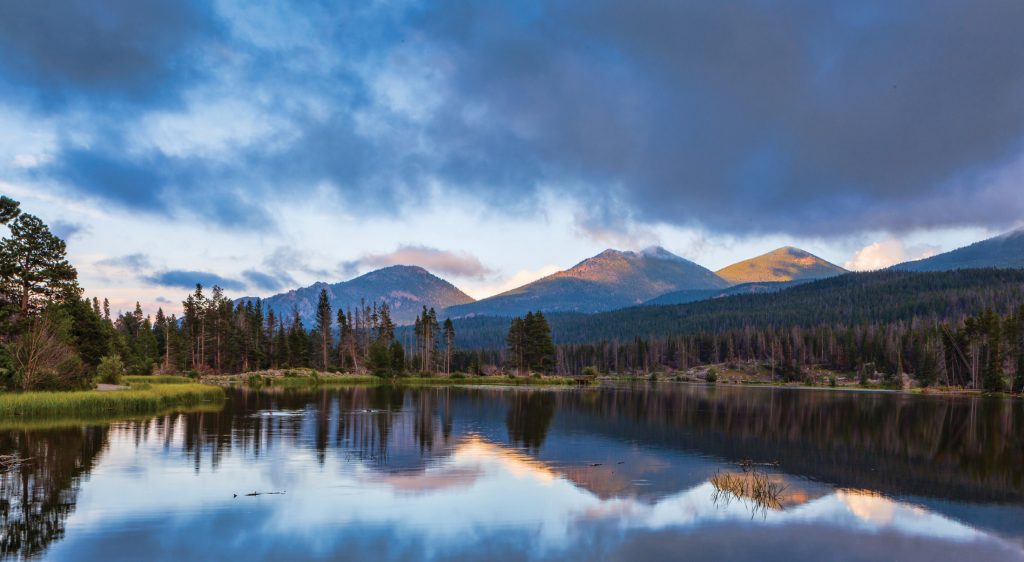“Sprague Lake Sunset” by Robin Conover Canon EOS 6D EF 24–70 mm, 2.8 L lens at 24 mm ISO 100, f22 at ¼ second, Gitzo tripod
As the heat and humidity set in, a summer respite to the mountains is always a welcome break to re-energize my soul. Whether the destination awaits in the Great Smoky Mountains of East Tennessee, the Rocky Mountains of Colorado or Glacier National Park in Montana, summer months are a great time to visit higher elevations to find some solitude in photography excursions.
Scouting out the right location is a must to ease frustration and increase your chances of making memorable photographs. Before I visit a park, I usually study a map, check out associated websites and apps and may even take a look at Instagram for possible locations. Many parks have heavily traveled spots that have probably been photographed a million times.
Because these iconic vistas are hard to pass up, I usually photograph them along with other more remote areas. Because I want my images to be as unique as possible, I try to create photographs that reflect my vision and style rather than just snapping a “Kodak Moment” at every frequently visited roadside pullout.
I’ve developed a sense of my own style with landscape photography, and it usually involves strong natural light and weather. I love the beautiful golden-hour light of sunrise and sunset. The low angle of the sun can create wonderful combinations of saturated color with defining highlights and deep shadows. Add a lake or other body of water to the foreground, and the scene can come alive in the reflection.
When I found Sprague Lake in Rocky Mountain National Park, it had all of those elements. I set up my camera on a tripod and composed the image with a fairly wide-angle lens.
The bright blue sky wasn’t terribly interesting, so I didn’t know if it would be a nice sunset. I added a circular polarizer to emphasize the reflection and placed the horizon off-center, using the rule of thirds.
Waiting for the sunset, I had a few minutes to breathe in the cool mountain air and watch waterfowl feed in the distance. As I get older, I find that taking time to enjoy the majesty of moments like this can be as important as taking the photograph.
As the sun dipped lower on the horizon, I resigned myself to just enjoying the solitude and possibly not getting a great shot because of the bright, clear sky. Just then, I noticed a few clouds rolling in from behind me.
They were moving fast, so I waited for them to fill the sky, perfectly framing the mountain peaks. As they just touched the tallest peak, I made this exposure. Within minutes, thicker clouds moved in and obscured the mountains, leaving this moment in my mind and on my camera.



